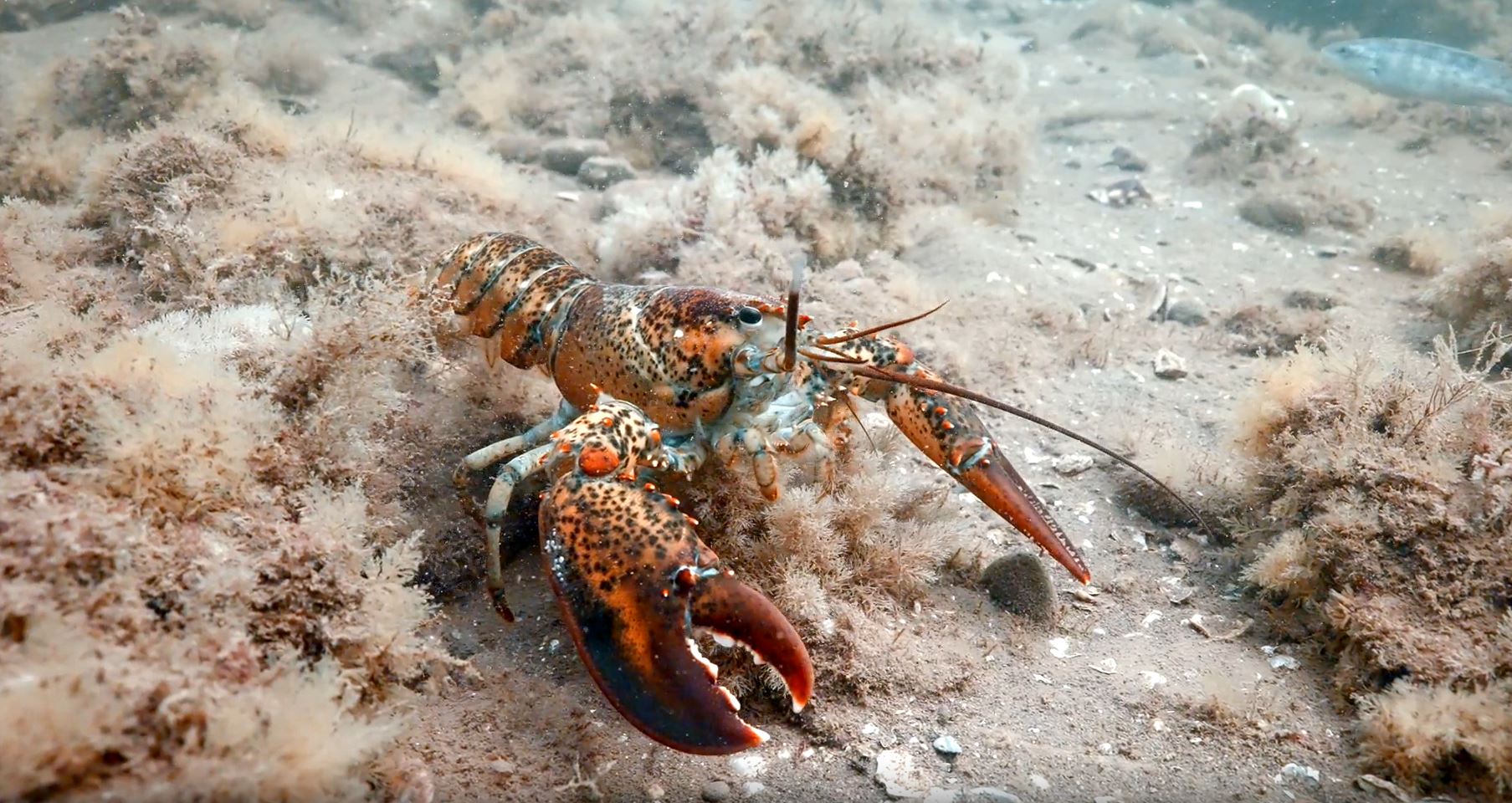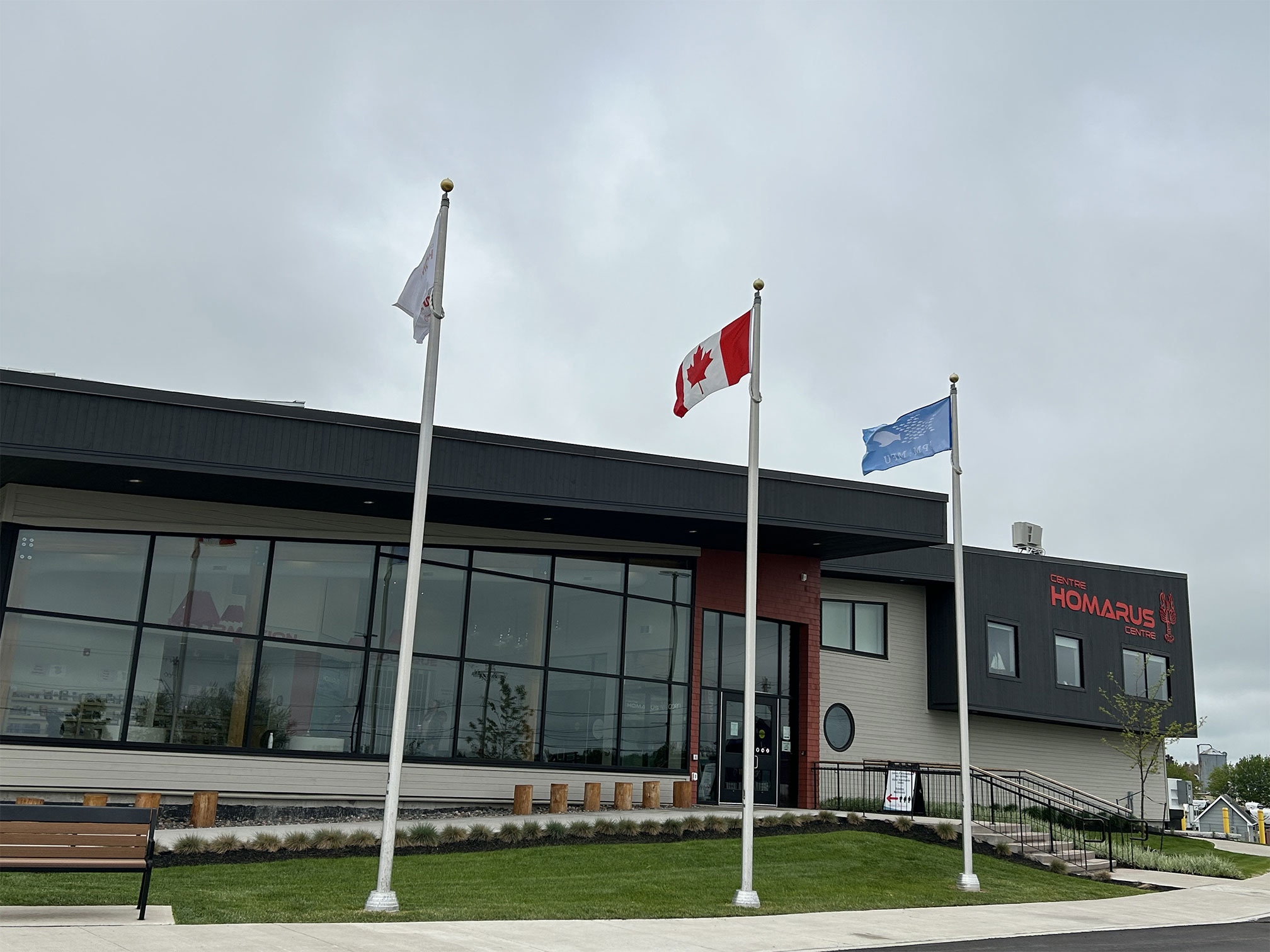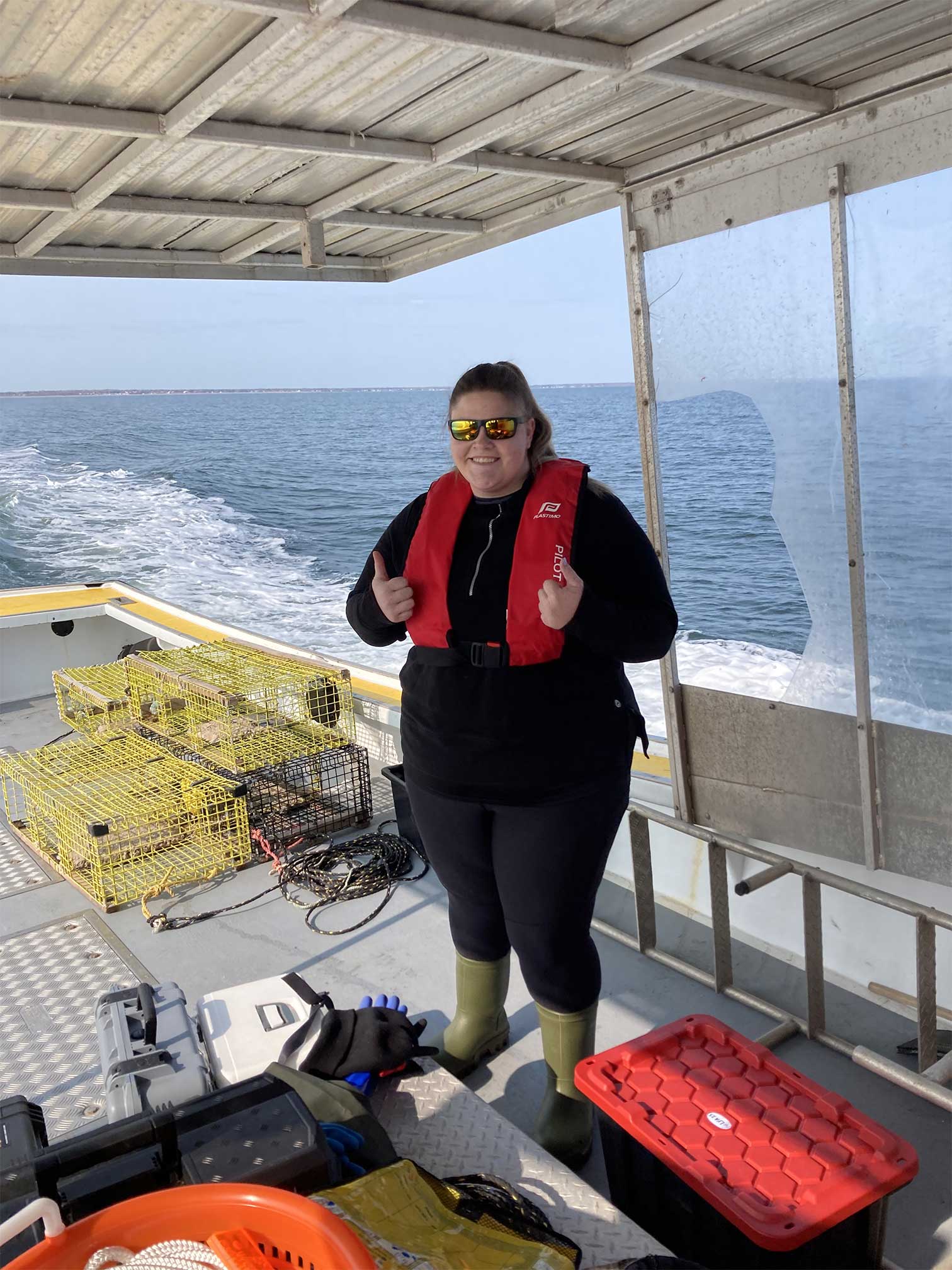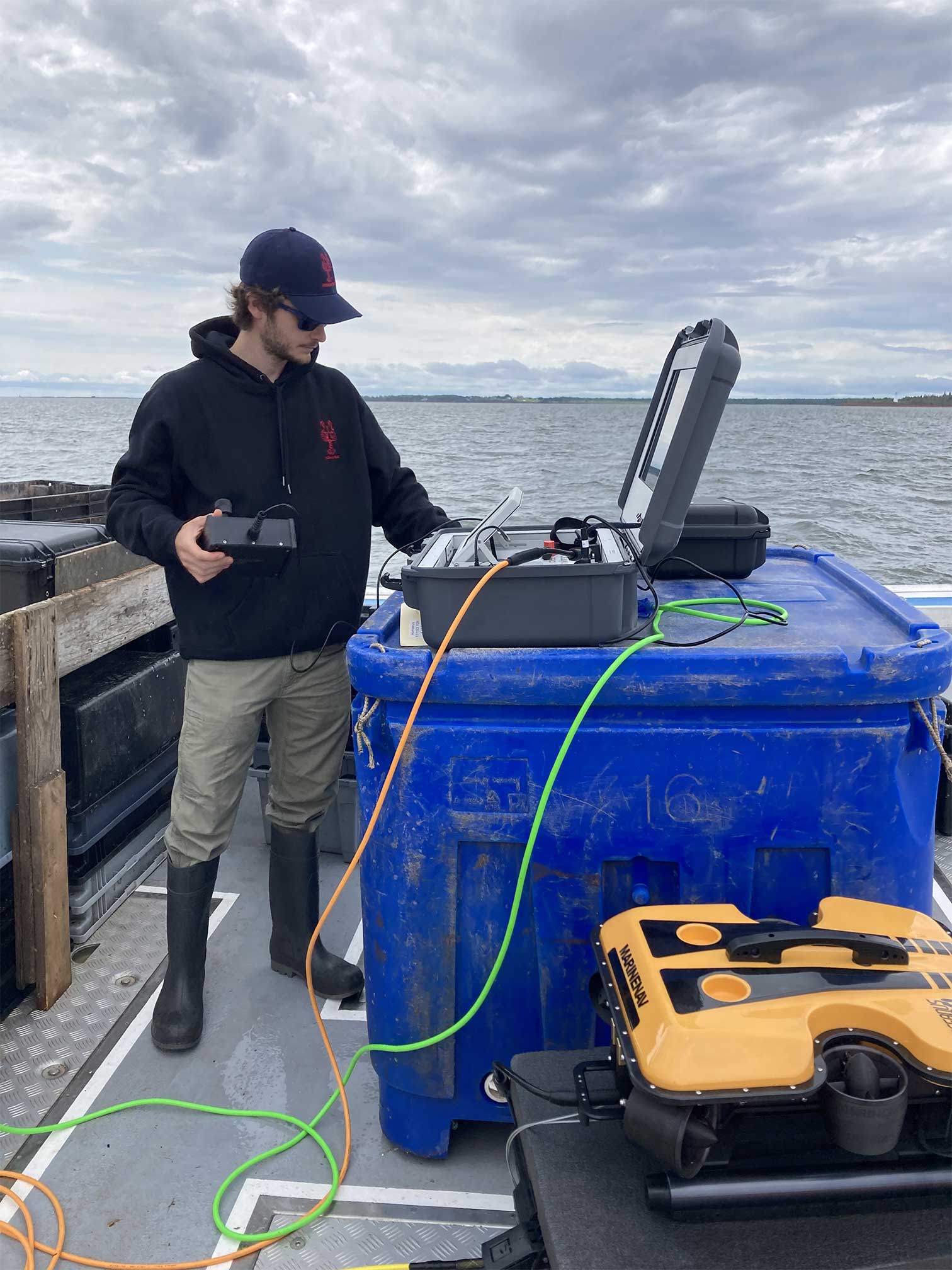Homarus Inc. – The science of sustainability

American lobster in its natural habitat, Scallop Buffer Zone - SFA 21 Marine Refuge, Southern Gulf of St. Lawrence. Summer 2023. © Homarus Inc.
Homarus Inc. and Fisheries and Oceans Canada (DFO): Working together to better understand the nursery grounds for Eastern Canada's lucrative lobster fishery.
About Homarus Inc. (Homarus)
In New Brunswick, the team at Homarus is diving into a research project that will give them a better understanding of the nursery grounds for American lobster, the most lucrative commercially fished species in Canada.
Homarus is the non-profit research arm of the Maritime Fishermen's Union (MFU), representing over 1,300 inshore fish harvesters in New Brunswick and Nova Scotia. Most members are lobster harvesters.
In 2022, total Atlantic lobster landings were worth $1.78 billion, and the total value of all Canadian commercial sea fisheries landings was $4.73 billion. In the southern Gulf of St. Lawrence, the landed value of the lobster industry was $0.56 billion, or 11.8% of the value of all commercial sea fisheries landings. This is significant from an ecosystem perspective, considering this area represents less than 1% of Canada's oceans.
"It's a huge industry and economically important to our coastal communities. It's hard to imagine that such an inconspicuous-looking animal can have such an incredible impact," says Maryse Cousineau, Assistant Director of Homarus.
The lobster industry isn't only a significant player in the Atlantic Canadian economy, supporting a multitude of small businesses and spin-off jobs in coastal communities. It's also proven itself to be sustainable, thanks in part to the foresight of fish harvesters themselves.
The motivation for the creation of Homarus began in the late 1990s, when lobster landings were dwindling dramatically in the Southern Gulf of St. Lawrence.
While looking for ways to increase lobster stocks, Maritime Fishermen's Union members visited a lobster hatchery in Bar Harbor, Maine that looked like a promising solution. They returned home and created Homarus; its first project was a hatchery.
"The mission of Homarus is really doing science for our members, our fish harvesters, and being able to contribute to scientific knowledge about the ocean," says Cousineau. "We want to make sure that the fishery stays viable, and the livelihoods of our members are protected and that means ensuring a healthy ecosystem."
Since its establishment, Homarus has worked on various research projects that support the lobster industry. Their research also extends to other species, including Atlantic herring, Sea scallop and Rock crab, which are also important fisheries for MFU members.
Understanding juvenile lobster habitat
More recently, Homarus researchers have been working on how to support the juvenile phase of the lobster lifecycle when its size and frequent molting make it more vulnerable to predators.
Their first step, in collaboration with DFO through a project funded by the Oceans Management Contribution Program, is trying to get a better understanding of the lobster nursery grounds while also providing insight into herring spawning grounds.
With DFO's support, Homarus purchased and began using an underwater remotely operated vehicle (ROV) to collect data in 2 DFO marine refuges, Scallop Buffer Zones, Scallop Fishing Areas (SFA) 21 and 22. These refuges are found along the coastlines of New Brunswick, Prince Edward Island and Nova Scotia in the Southern Gulf of St. Lawrence.
These marine refuges protect juvenile lobsters and their habitat by prohibiting commercial scallop fishing. This type of fishing uses gear that drags along the ocean floor and disturbs sheltered areas that juvenile lobsters hide in when they are most vulnerable.
"We're monitoring these areas to see what they look like because there's not a lot of information on them and we're trying to fill in that knowledge gap," says Cousineau. "We want to understand these benthicFootnote 1 environments and then determine what we can do to nurture them and keep them healthy."
So far, the Homarus research team has installed 8 water-quality monitoring stations. They were created by equipping modified lobster traps with probes capable of measuring a number of parameters year-round, such as dissolved oxygen, temperature and acidity.
The project involves getting a better idea of what a healthy juvenile lobster ecosystem looks like, such as what other plant life and species live there.
For this reason, the research team is doing a series of underwater dives and taking video footage at strategic locations along the ocean floor, including filming inside and outside the buffer zones to compare the habitats of juvenile and adult lobsters.
As part of this collaborative project with DFO, Homarus is also developing a new interpretive exhibit and activities for the Homarus Centre in Shediac, New Brunswick to educate Canadians about the lobster lifecycle and habitat.
A diver herself, Cousineau is awed by the diversity of sea life she's seen so far. She's excited about how her team will use their new underwater footage to help educate the public.

The Homarus Centre offers unique, immersive, and interactive lobster-related educational and visitor experiences that promote the importance of conserving marine habitats and resources. Spring 2024. © Homarus Inc.
"We're thinking about using 360-degree video to help people understand what's down there," says Cousineau. "Once you see the ecosystem, it can give you a sense of amazement and that makes you want to protect it. It can also be a good teaching tool to help people understand why certain areas are closed off to certain types of fishing."
More eyes on (and under) the water
DFO's marine refuges are an integral part of marine conservation in the Southern Gulf of St. Lawrence. For DFO and Homarus, this strategic research partnership is instrumental in reaching the refuges' conservation goals.
After a marine refuge is recognized, DFO develops its management plan. These plans include monitoring, surveillance and enforcement approaches to support protection.
In the case of the marine refuges in the Scallop Buffer Zones, the research that Homarus is currently conducting will support the implementation of the ecological monitoring plan being developed by DFO.
"There are a lot of moving parts when you're managing a site, and to be able to have a partner, like Homarus who represents the fishing industry is really important in order to successfully accomplish our conservation objectives," says Krista MacKenzie, Senior Biologist, Marine Planning and Conservation, DFO, Gulf Region.
"In addition to their research expertise, they bring hands-on experience to the table. They've got a lot of eyes on the water and that makes them a really important partner to have. And, of course, working together, we can accomplish so much more."
- Date modified:

